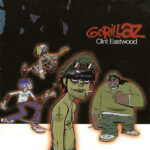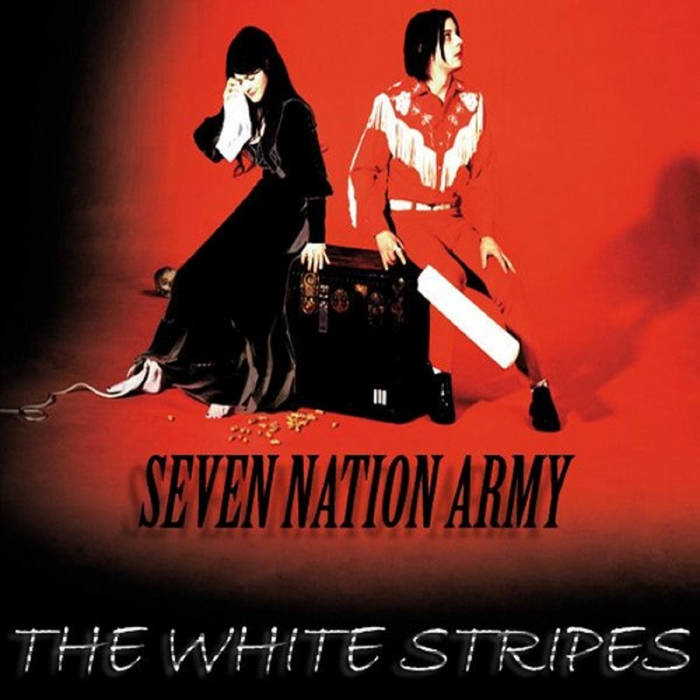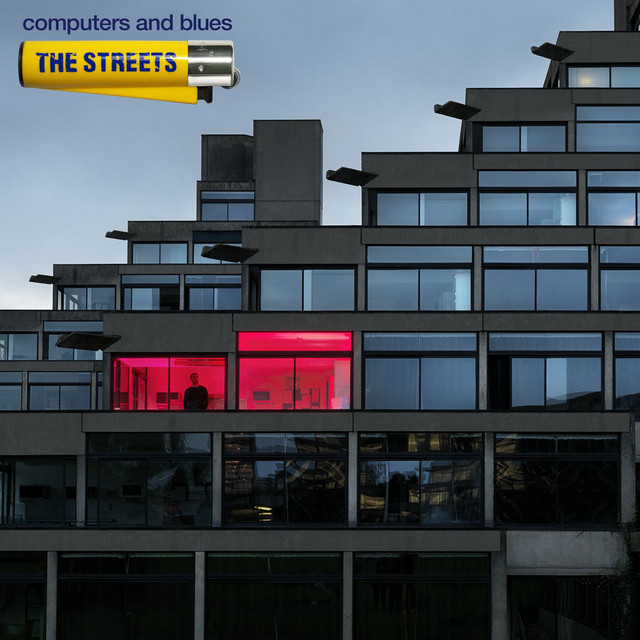 When Gorillaz unleashed “Clint Eastwood” in 2001, the world didn’t quite know what to make of it. Here was a song performed by a cartoon band—complete with animated members and a backstory straight out of an alternate universe—that somehow sounded more human than most pop music of the time. It was trip-hop meets hip-hop meets melancholy Britpop, wrapped in an eerie electronic haze and anchored by a hypnotic beat. And it worked.
When Gorillaz unleashed “Clint Eastwood” in 2001, the world didn’t quite know what to make of it. Here was a song performed by a cartoon band—complete with animated members and a backstory straight out of an alternate universe—that somehow sounded more human than most pop music of the time. It was trip-hop meets hip-hop meets melancholy Britpop, wrapped in an eerie electronic haze and anchored by a hypnotic beat. And it worked.
“Clint Eastwood” wasn’t just a hit; it was a statement. It proved that music could transcend physical identity, that technology and art could merge into something strange and soulful. It was a warning shot from the future—and two decades later, it still sounds like tomorrow.
The Birth of the Virtual Band
By 2001, Damon Albarn had already achieved fame as the frontman of Blur, one of the defining bands of the Britpop era. But Albarn was restless. He’d grown tired of the scene, tired of the press, and tired of the endless debates about which band was the “real” voice of Britain.
Then came Jamie Hewlett, the visual artist best known for co-creating the comic Tank Girl. The two met in the late ‘90s and began brainstorming a wild idea: what if they created a virtual band—a group of animated characters who could exist without egos, celebrity drama, or tabloid nonsense?
From that idea, Gorillaz was born. The band consisted of four fictional members: 2-D (the wide-eyed singer and keyboardist), Murdoc Niccals (the sleazy bassist and self-proclaimed band leader), Noodle (the mysterious guitar prodigy from Japan), and Russel Hobbs (the drummer haunted by the ghosts of dead rappers).
The concept was bizarre, the execution ambitious, and the result—“Clint Eastwood”—was nothing short of revolutionary.
A Song That Defied Labels
“Clint Eastwood” was the debut single from Gorillaz’ self-titled album, and from the first beat, it sounded like nothing else on the radio. Built around a dusty, looping hip-hop beat and a melancholic melodica riff, the song created a mood that was both laid-back and unsettling.
Albarn handled the chorus, his voice dripping with detached emotion as he sang:
“I ain’t happy, I’m feeling glad
I got sunshine in a bag
I’m useless, but not for long
The future is coming on.”
It’s one of the most hauntingly ambiguous hooks in modern music—equal parts ironic, hopeful, and apocalyptic. Is he optimistic or defeated? Is this the sound of enlightenment or exhaustion?
Then, contrasting Albarn’s dreamy vocals, came the verses by Del the Funky Homosapien, who performed as Del the Ghost Rapper, a spirit possessing the band’s drummer Russel. His flow was smooth, confident, and full of cryptic philosophy:
“Finally, someone let me out of my cage
Now, time for me is nothing ’cause I’m counting no age.”
That mix of cartoon mythology, existential lyrics, and trip-hop production made “Clint Eastwood” feel like something completely new. It wasn’t Britpop, it wasn’t rap, it wasn’t electronica—but it borrowed from all of them. It was Gorillaz, and that became a genre unto itself.
The Sound of the Future
Musically, “Clint Eastwood” is a masterclass in minimalist production. The beat—crafted by Albarn and producer Dan “The Automator” Nakamura—is deceptively simple, built from a steady drum loop, sparse bassline, and eerie melodica melody that Albarn recorded himself.
The song’s atmosphere is its secret weapon. Every sound feels slightly haunted, as if it’s drifting out of a half-broken radio in another dimension. That’s what made it stand out in 2001, an era dominated by polished pop and blinged-out hip-hop. “Clint Eastwood” sounded dirty—in the best possible way. It was lo-fi, smoky, and cinematic.
The melodica riff—instantly recognizable—became an unlikely hook, something between a Western whistle and a reggae groove. It was quirky but unforgettable, giving the track its ghost-town swagger and cinematic vibe, perfectly matching the title’s reference to the legendary film actor known for his stoic coolness.
The “Clint Eastwood” Connection
The title wasn’t just random. Damon Albarn has said that the name came from the song’s Western-like feel—the sparse instrumentation and the melodica line reminded him of the soundtracks Ennio Morricone composed for Eastwood’s iconic spaghetti Westerns like The Good, the Bad and the Ugly.
There’s a sense of lone-cowboy melancholy in “Clint Eastwood.” The beat rides along like a horse through a deserted town, while Albarn’s weary voice sounds like a drifter contemplating the meaning of it all. Del’s verses, meanwhile, add the perspective of the ghostly conscience within—the inner voice, wise yet slightly unhinged.
Together, they create a song that feels like the meeting point of two worlds: the analog past and the digital future. It’s a Western showdown fought with samplers and synthesizers instead of pistols.
A Visual Revolution
When the music video dropped, everything changed. MTV was still the cultural pulse of the early 2000s, and the “Clint Eastwood” video was unlike anything it had ever aired. The animated band members appeared for the first time, each with their distinct personality, rendered in Jamie Hewlett’s sharp, comic-inspired style.
The video opens with the band performing in a graveyard, only to be interrupted by a massive ghostly gorilla rising from the ground as Del raps from its translucent chest. It’s dark, absurd, funny, and totally captivating.
Audiences were mesmerized. Who were these characters? Were they real? Was there a real band behind them? The mystery became part of the appeal. In an era obsessed with celebrity, Gorillaz offered something new: anonymity, world-building, and pure creative weirdness.
“Clint Eastwood” didn’t just launch a song—it launched an entire mythology.
The Philosophy Inside the Beat
Beneath the surface cool of “Clint Eastwood” lies a surprisingly deep philosophical undercurrent. Del’s verses read like a manifesto on self-awareness and evolution:
“The essence, the basics
Without it, you make it
Allow me to make this
Child-like in nature.”
He raps about consciousness, freedom, and enlightenment—concepts you don’t often hear in mainstream hip-hop. It’s almost spiritual, but without any preachiness.
Albarn’s chorus, on the other hand, captures the opposite feeling: detachment, fatigue, and ironic acceptance. Together, the two voices represent a duality—the human and the ghost, the body and the spirit, the artist and the alter ego.
That’s part of the brilliance of “Clint Eastwood”: it functions both as a catchy single and as a kind of existential riddle.
The Impact and Legacy
When “Clint Eastwood” hit, it became an instant global phenomenon. It reached the Top 10 in the UK and cracked charts around the world, eventually going platinum in multiple countries. The track’s strange blend of hip-hop, electronica, and alternative rock opened doors for what music could be in the digital age.
More importantly, it introduced the concept of a virtual band to the mainstream. Gorillaz weren’t just a musical project—they were a multimedia experiment, combining animation, internet culture, and genre-bending production.
In the years since, countless artists have cited “Clint Eastwood” as an influence, from alt-hip-hop producers to indie bands experimenting with visuals and anonymity. It paved the way for music to exist beyond traditional boundaries—something especially prescient in today’s digital-first world of avatars, AI art, and virtual concerts.
Damon Albarn’s Masterstroke
For Damon Albarn, “Clint Eastwood” was proof that he could shed the skin of Britpop and become something entirely new. His melancholy melodic sense gave the song its emotional weight, while his willingness to experiment with hip-hop rhythms and electronic textures kept it fresh.
It’s easy to forget how risky this was in 2001. Albarn could’ve kept making Blur-style anthems and stayed comfortably successful. Instead, he blew up his image and started over with a cartoon band. That kind of creative gamble rarely works—but in this case, it redefined his career.
“Clint Eastwood” gave Albarn freedom. It allowed him to explore identity, technology, and genre without being trapped by his own face. It’s ironic, really—the song that begins with “I ain’t happy, I’m feeling glad” ended up being one of the most liberating moments of his artistic life.
The Ghost Still Rides
Two decades later, “Clint Eastwood” remains one of those songs that feels permanently relevant. Its themes of disconnection and awakening feel even more potent in an age of digital overload and online personas.
The line “The future is coming on” hits differently now. Back in 2001, it sounded prophetic. Today, it sounds reflective. The future that Albarn and Hewlett imagined—a world where technology and humanity blur—is here. And we’re all living in it.
The song continues to appear in movies, video games, and playlists across generations. It’s the kind of track that bridges genres and cultures, equally at home in a hip-hop mix, a chillout playlist, or a retro 2000s throwback. Its DNA is everywhere—from the psychedelic hip-hop of Kid Cudi to the dark-pop of Billie Eilish.
Beyond the Cartoon
Perhaps the most remarkable thing about “Clint Eastwood” is how emotional it still feels. For a song performed by fictional characters, it has a strange humanity to it. Albarn’s weary tone, Del’s spiritual musings, the haunted production—it all adds up to something that feels realer than most flesh-and-blood performances.
It’s a reminder that music doesn’t need a face to have a soul. Sometimes, hiding behind a cartoon can reveal more truth than any spotlight ever could.
Final Reflection
“Clint Eastwood” isn’t just a great song—it’s a moment in music history when everything changed. It proved that art could transcend identity, that sound could tell stories just as powerfully as lyrics, and that technology could be a gateway to deeper emotion rather than a barrier to it.
When Damon Albarn sang “I’m useless, but not for long / The future is coming on,” he was right in ways he probably didn’t even realize. The song predicted the entire next era of pop culture—virtual idols, genre fusion, and the blurring of the real and the artificial.
Yet despite its futuristic shell, “Clint Eastwood” remains deeply human. It’s about loneliness, enlightenment, and the strange beauty of self-awareness. It’s about ghosts—digital and emotional—that still haunt us.
So when that beat drops and that melodica sighs its dusty refrain, you’re not just hearing a song from 2001. You’re hearing a prophecy fulfilled, a bridge between the analog and the virtual, and the eternal sound of a band that never existed—but somehow feels more alive than most that do.


